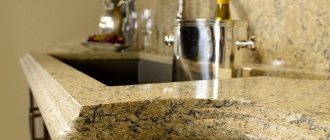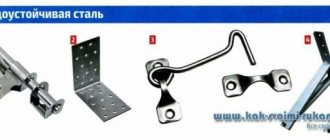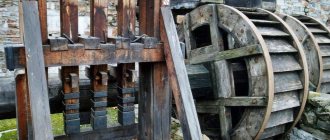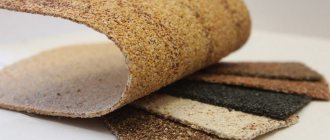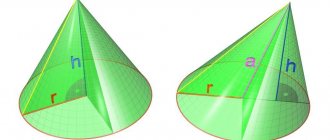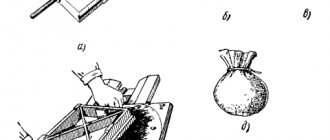Tumbled stone is produced using a unique technology. As a result, the material acquires improved quality characteristics. Polishing and grinding ensure a smooth surface. In addition, using tumbling you can obtain a product of the required shape (both standard and non-standard). All procedures are performed using tumbling equipment.
Areas of application
Finishing material is in demand in many industries, due to its quality and variety of color palette:
- Jewelry industry. A targeted impact on natural stone allows you to smooth out sharp edges, due to which the material becomes smooth. Elegant stones are used to make bracelets, pendants, pendants, key chains, etc.
- Decoration of facades. This solution is chosen by designers for finishing the facade and basement. Galvanized stone can be used both for exterior decoration and for decorative purposes.
- Interior design. Natural stone processed using special technology is suitable for finishing indoor walls. It is considered a classic option when decorating home fireplaces. An island made of rounded natural stone will harmoniously fit into any style.
- Design of artificial fountains and ponds. Against the background of water, the stone will look even more attractive. An excellent option for creating unique design compositions. It is customary to decorate aquariums with small stones.
- Landscape design. The material is suitable for laying garden paths and finishing fences. Natural material is able to cope with mechanical loads and sudden temperature changes, so there are practically no operational restrictions.
- Construction of coatings. Galvanized stone is used to decorate summer terraces, walking and pedestrian areas. This area is durable, copes well with moisture, and does not require special care.
Where are tumbling stones used?
Due to its characteristics and wide range of colors, this finishing material is used:
- In jewelry. Thanks to the targeted impact on the surface of natural stone, all sharp corners are erased and the material becomes smooth. Such a stone can be carried in a bag or pocket, enclosed in a graceful and elegant frame and worn on the chest as an amulet. Stones of various shapes and sizes make beautiful pendants, bracelets, beads, necklaces and keychains.
Carnelian beads tumbling
- As one of the options for finishing the facade of a house or its base, for creating decorative elements and for other external works.
Galvanized stone on the facade
- For interior design. Natural stone, processed using a special technology, can be used to decorate both the walls of a room and individual parts (for example, fireplaces). Islands made of natural rounded stone create a unique style and emphasize the taste of the home owners.
Fireplace tumbled stone
- When decorating artificial ponds and fountains of varying heights and complexity. Water perfectly highlights the shades of the stone and the beauty of an interesting composition.
Tumbled stone pond
- In landscape construction for creating garden paths and finishing fences. Resistance to mechanical stress and the ability to withstand various weather conditions make tumbled stone in demand among landscape designers.
Galvanized stone for paths
- To create an interesting interior in aquariums. The stone is very reminiscent of a sea stone in appearance, which allows the owner to create an interesting composition against which the inhabitants of the aquarium will look most advantageous.
Aquarium with tumbling stone
- For creating large-area coverings - areas for summer cafes, walking areas, pedestrian paths. The area covered with rounded stone is suitable for use at different temperatures and is not afraid of moisture. An undeniable advantage is ease of care and maintenance.
Cafe area with tumbled stone
Types and technologies of tumbling
Various equipment is used for stone tumbling, and the process itself can be carried out in several ways. This depends on the characteristics of the material, the type of mixing and the abrasive. The most popular are tumbling drums, which can be made in several modifications.
A filler is also used for processing, which is actually a medium for processing workpieces and providing the desired characteristics and required roughness. The movement of filler and parts takes place in the working space of the drum.
Machines can be:
- mechanical;
- electromagnetic.
The former can be equipped with rotating drums or vibration-controlled drums.
Tumbling drum
Tumbling drum
The simplest and most affordable machine designed for finishing. The design is a multifaceted cylindrical drum. May have a vertical, horizontal or angular relationship to the axis.
The starting mechanism is an electric motor. The process of cleaning and finishing the stone is carried out by freely mixing the stone with abrasive particles. The drum is popular among jewelers.
Tumbling towing rig
Less popular equipment compared to the previous one.
The operating principle looks like this:
- fixing the product on the spindle;
- starting the movement and placing it into a work surface filled with abrasive.
Tumbling Towing
When the filler comes into contact with the product, a thin layer is quickly removed from the surface of the stone. To add or update the filler, you need to change the direction of the spindle in relation to the container or connect a vibration drive.
This installation does not allow you to simultaneously work with a large batch of stone, which is considered the main disadvantage. The advantage of such equipment is the high quality of finishing.
Centrifugal type rotary machine
This installation is one of the modern equipment for finishing. The design includes a vertically fixed stationary compartment, a rotating plate and blades. The compartment is a container for the working mixture. The latter begins to move under the influence of rotation of the actuator.
In the fixed zone there is a special profile that ensures the correct path of movement of the abrasive.
Installation disadvantages:
- inability to process large parts;
- accelerated wear of the internal space due to constant impact from the actuator.
Advantages:
- high productivity (the unit works faster than any other tumbling equipment);
- possibility of simultaneous processing of large batches;
- option for adjusting rotations to give a special property to the surface of the stone;
- quality of finishing.
The machine is used in a professional environment because it has an impressive price.
Tumbling vibrator
Such equipment is widely used in the jewelry industry. Traditional drum design, equipped with a vibration drive on the body. The drum serves as a container for tumbling mixture and materials. Special compounds (compounds) are intended for wet processing.
Tumbling vibrator
The machine is powered by an electric motor with a vibration drive. Oscillatory movements provide a certain speed of movement of materials. As a result of this impact, a ground and polished stone is obtained.
Pros:
- versatility (the machine can be used to process any stone);
- ability to work with large batches;
- high processing speed;
- Can be used for finishing fragile and soft materials;
- the ability to control the process at all stages.
The only negative is the high cost of the equipment.
Types of tumbling
Depending on the purposes, several types of tumbling have been developed. Today the following types are distinguished:
- rotary;
- vibration
The essence of rotary tumbling is the interaction of the metal being processed and the abrasive inside a rotating drum. The quality of material processing using this method is quite high, but the speed and efficiency are quite low.
Therefore, the most common is the vibration method. Vibration of the abrasive occurs due to the vibration drive on which the working container is installed. Surface treatment occurs faster and with better quality. The peculiarities of the method make it possible to process workpieces of any size and shape.
Also, depending on the type of filler, tumbling is divided into:
- dry;
- wet.
The dry method involves the use of conventional abrasive filler. The wet method is based on adding water, usually mixed with a coagulant, to the working container. This method is more effective and allows for better cleaning and polishing of the surface. The wet method is indispensable in cases where the workpiece needs to be prepared for the application of enamel or galvanic coating.
There is also a classification based on the type of equipment used:
- drum tumbling;
- planetary tumbling;
- centrifugal tumbling.
Characteristics of tumbled stone
The main characteristic of stone after tumbling is thickness. It is determined by the thickness of the feedstock, the scope of use, the technology and equipment used. Galvanized stone has a perfectly smooth surface on the front side and therefore does not require finishing polishing. That is, the material is suitable for use after tumbling.
Another characteristic is the tint range. It is determined by the type of mineral and can vary from light pastel colors to dark gray.
Galvanized stone has better properties compared to non-galvanized stone. It is resistant to moisture and sudden temperature changes.
Stone tumbling at home
You can process the stone yourself using a concrete mixer or manually. The manual process is quite lengthy and labor-intensive. But the quality of material processed manually will be an order of magnitude worse compared to professional processing.
Tumbling stone using a concrete mixer
A concrete mixer will remove dirt and perform rough grinding. The starting material must be placed in the unit, an abrasive or detergent must be added, and put into operation. Experts recommend closing the drum window with a lid.
This method is suitable for tumbling medium and large products. It is not recommended to tumble small samples in this way due to the high risk of damage.
What is tumbling?
Tumbling is the name given to stones of a natural, slightly rounded shape, polished on all sides. Most often, such inserts are used in beads, bracelets and necklaces.
This is one of the few methods of stone processing that is performed automatically: jewelry made from gems processed in this way is the most accessible.
Raw stones of similar size, shape and hardness along with abrasive powder are poured into a metal drum. The whole structure rotates and rattles (sometimes for several days), after which it produces nice polished pebbles. All that remains is to drill holes for the thread - and you can assemble the decoration.
But handmade tumbling is especially valued and most beautiful. The fact is that pebbles rotating in a drum are evenly ground down on all sides, and natural material, as a rule, has rather deep cavities and cracks. As a result, by the time all the defects are sanded away, very little remains of them. Working with each stone individually, the master can “pull out” a much larger volume from a natural pebble of the same size, and, in addition, leave only that part of it that has the most expressive pattern.



